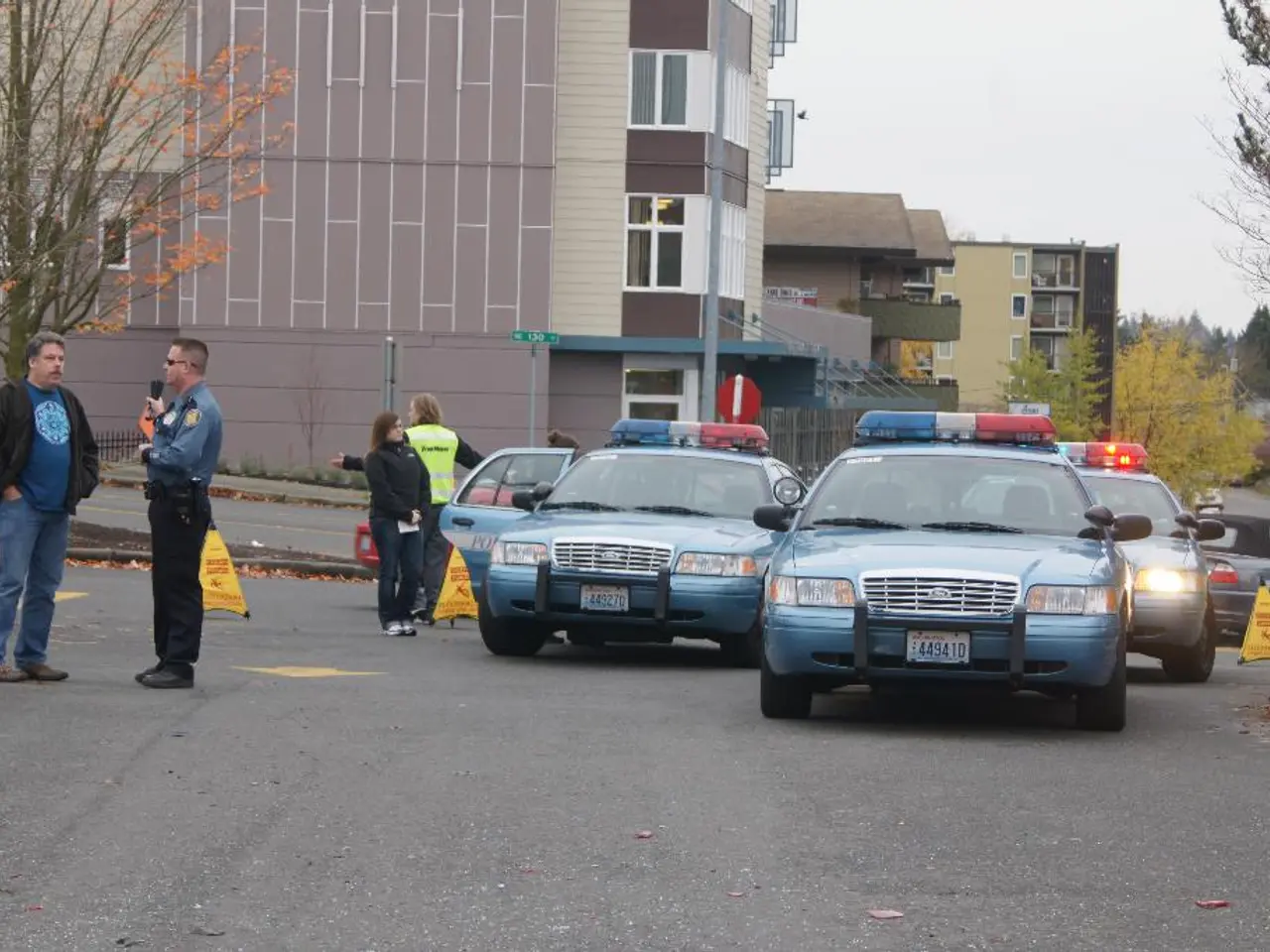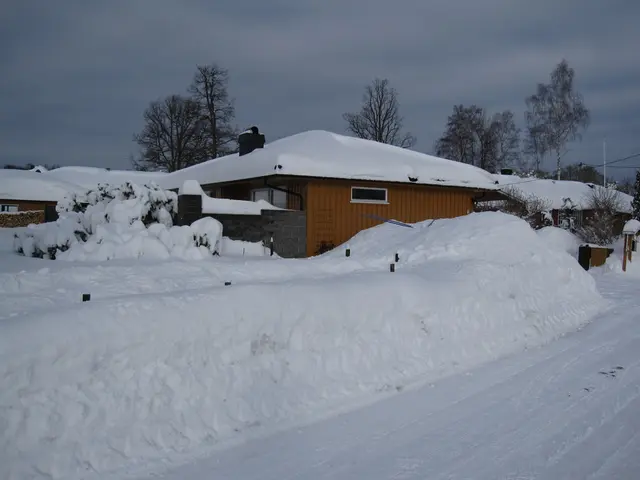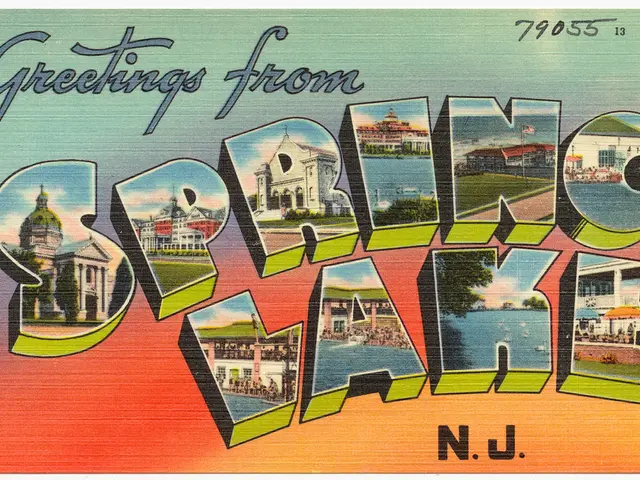Heavy rain inundates Mexico City's central square, Zócalo, prompting closure of the airport
Flooding Strikes Mexico City: Overwhelmed Drainage Systems and Broken Infrastructure
Mexico City faced a significant flooding event during the 2025 rainy season, with the city's infrastructure and services severely impacted. The cause of the flooding was primarily attributed to intense rainfall, which experts believe is more a result of the city's broken water management system and poor urban planning than natural disasters.
On August 10, 2025, more than 84 millimeters of rain fell in the Zócalo, flooding the central square and parts of the historic center. This amount exceeded half of the average rainfall for the entire month of August.
The flooding affected almost the entire territory of Mexico City. The intense rains forced the suspension of takeoffs and landings at Mexico City's airport for about four hours, impacting over 100 flights and nearly 15,000 passengers. The subway system was also disrupted due to flooding, adding to the city's transportation challenges. Flooding caused significant disruptions on roads, with streets like Calle Regina experiencing severe waterlogging. Hail storms in early August also contributed to minor road damage and traffic issues.
The city's drainage systems were overwhelmed by the heavy rainfall, demonstrating their inadequacy for handling such intense weather conditions. Experts noted that the recurrent flooding is due to a lack of preventive measures and scarce maintenance rather than natural factors.
In response to the flooding, Mayor Clara Brugada activated the Plan Tlaloque, which mobilized emergency services across the city. Residents were advised to take precautions, and cleanup operations were initiated to maintain public safety. Despite these efforts, the flooding highlighted the need for more robust infrastructure and better urban planning to mitigate future flooding events.
The Guadalajara and Cancún airports were among the airports to which Mexico City-bound flights were diverted. Six stations on Line 5 and two stations on Line 3 of the Mexico City Metro system were closed due to the downpour on Sunday evening, with significant flooding outside some of the shuttered stations.
President Claudia Sheinbaum announced that the federal government would provide support to the areas of the capital most affected by the flooding. An explosion and fire occurred near the San Antonio Abad station on Line 2 of the metro due to a short circuit caused by the rain, causing services to be suspended for around two hours from 7:30 p.m.
Serious flooding was reported in various parts of Mexico City, including the boroughs of Cuauhtémoc, Venustiano Carranza, Iztacalco, and Gustavo A. Madero. The Metropolitan Cathedral, Balbuena General Hospital, and Gregorio Salas Hospital were among the places affected by the flooding.
In an effort to prevent future flooding events, the water management minister called on residents to be careful with the disposal of their trash to ensure that it doesn't end up in stormwater drains. National Water Commission (Conagua) personnel also assisted the efforts to reduce the flooding, putting 37 pumps into operation to remove 74,000 liters per second.
[1] [https://www.eluniversal.com.mx/estados/2025/08/10/la-ciudad-de-mexico-se-inunda-por-el-peor-lluvia-de-la-temporada-se-inundan-el-aeropuerto-y-el-metro] [2] [https://www.milenio.com/estados/mexico/2025/08/10/mexico-ciudad-se-inunda-por-el-peor-lluvia-de-la-temporada-se-inundan-el-aeropuerto-y-el-metro] [3] [https://www.reforma.com.mx/estados/2025/08/10/lluvia-en-mexico-ciudad-se-inunda-por-el-peor-lluvia-de-la-temporada-se-inundan-el-aeropuerto-y-el-metro] [4] [https://www.eluniversal.com.mx/estados/2025/08/10/mexico-ciudad-se-inunda-por-el-peor-lluvia-de-la-temporada-se-inundan-el-aeropuerto-y-el-metro] [5] [https://www.eluniversal.com.mx/estados/2025/08/11/mexico-ciudad-se-inunda-por-el-peor-lluvia-de-la-temporada-se-inundan-el-aeropuerto-y-el-metro]
- The flooding in Mexico City serves as a reminder of the critical intersection between urban planning, infrastructure maintenance, and climate-change-induced weather patterns in our cities.
- The newspaper headlines might read, "Mexico City Underwater: Broken Infrastructure and Climate Change Cause Devastating Floods", as the city grapples with the aftermath of the catastrophic deluge.
- As the city recovers from the floodwaters, there is growing concern among environmental scientists about the impact of the flood on the local environment and the potential for increased car-accidents due to the slick roads.
- Meanwhile, the general-news media is focused on the status of businesses and their ability to resume operations after the flooding, with many small businesses fearing they may never recover.
- The federal government's response to the floods has been met with mixed reactions, with some criticizing the slow pace of aid distribution, while others praise the emergency services for their quick response.
- The floods have raised questions about the adequacy of weather forecasting systems in Mexico and the need for more accurate and timely information to help cities like Mexico City prepare for extreme weather events.








